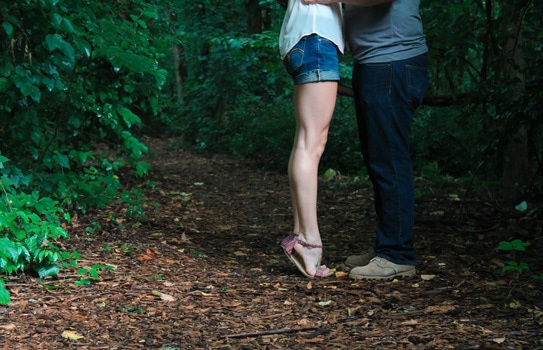I write romance, so yeah, I love love scenes. I enjoy writing them. It’s a lot of fun. I look forward to them. Contrary to what many think, though, those love scene aren’t always sexual. It can be any moment of intimacy between two characters, a simple touch of a hand. Not necessarily skin to skin, even glove to glove, or a hand on someone’s back through a thick coat, can become the most intimate of moments.
Whether you write romance or not, consider using moments of character intimacy, between lovers, between friends, between family members, to heighten your story and engage the emotions of your reader. Capturing the heart as well as the mind allows for a more layered experience. It’s more engaging and therefore more page turning.
A major key to writing intimacy between characters is their reactions. It’s not much different from any other scene in that there’s an action and a reaction. The same types of reactions apply: physical, internal thought, and verbal. The key reactions in an intimate moment thought are emotional and sensational responses.
Action:
Let’s start with a basic character action, “He touched her face.” In this example, we’ll write it from the point-of-view of the female character. The first thing we want is more description regarding the touch: what part of his hand he used, what spot on her face, the warmth and texture of his hand etc. Then come the reactions.
Reactions:
Physical reaction:
What’s her physical response? This is the knee jerk or instinctive reaction, different from the following action. Her physical reaction might be to pull away or to lean into his hand.
Internal thought reaction:
What does she think of the touch? She may like it, she may not like it, and many varying degrees in between. Is the touch welcome or unwelcome? Is it expected or unexpected?
Verbal reaction:
This could be dialogue. It could also be any sort of auditory reaction, such as a sigh, a release of breath or a gasp.
Sensational reaction:
This is different from the description of the touch. Yes, his hand might be warm or cool, but that does not tell us the reaction of her senses. Does her cheek heat and blush? Does a tingle of cool run over her skin? What are the reactions of her nerve endings? How deep does she feel the touch? She may literally only feel it skin deep, or she may feel it down to her chest, her gut, or down to her toes. Here’s where the author gets to decide how visceral or erotic you how want to go.
Emotional reaction:
How he’s touching her and how she’s interpreting the touch can change her emotions toward him. Is it more gentle than she suspected, causing her level of care for him to increase? Is it unwelcome or harsh, causing her feelings of hatred or disgust to increase?
Not all of these reactions need to be present for each action, and they can be in alternate orders.
Following Action
Next comes the character’s following action. What do all of those reactions lead her to do next? Her next action could be anything from kissing his hand to touching his face, to slapping him, to running away.
Keep It Original
The goal for all of these statements is to be as fresh as possible. No one likes to read clichés, not even romance readers. “He touched her face,” for instance, isn’t fresh. It’s been written many, many times. “He grazed her cheek with his thumb,” perhaps, has more originality to it.
The best way to keep reactions fresh is to keep in mind who your characters are as individuals. The temperament and attitude of the character will determine her reactions in speed and intensity considerably.
Many other factors go into constructing a love scene, depending on length and the level of intimacy already established in the character’s relationship. Things like tension, the longing of characters for different levels of intimacy, the goals of each character, the conflict that arises from the intimate moments. The structure of the scene varies too, how the characters and plot develop through the actions and reactions in the scene. I’ll be touching on these in
later columns.
Love scenes, moments of intimacy, are a ripe place for enriching plot and characters. If it makes you squeamish, try it anyway. It just might fill in some of the quizzical holes in your manuscript you’ve been struggling with.

Robin Lovett, also known as S.A. Lovett, writes contemporary romance, and her debut novel, Racing To You, will be released July of 2016. She is represented by Rachel Brooks of the L. Perkins Agency and has a forthcoming series releasing with SMP Swerve in the summer of 2017.
She writes romance to avoid the more unsavory things in life, like day jobs and housework. To feed her coffee and chocolate addictions, she loves overdosing on mochas. When not writing with her cat, you can find her somewhere in the outdoors with a laptop in her bag. Feel free to chat with her on Twitter.








